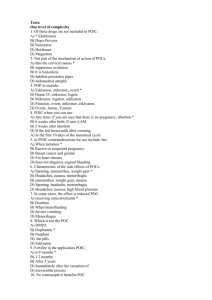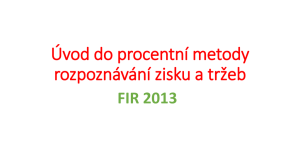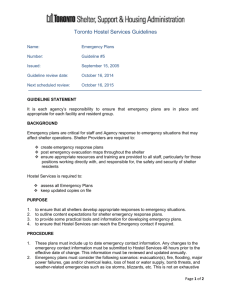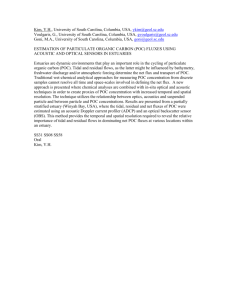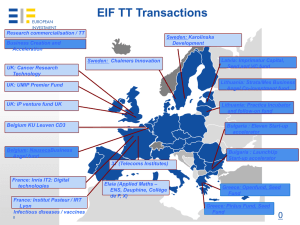Mitigation Measures Recommended to Reduce Immediate Threats
advertisement
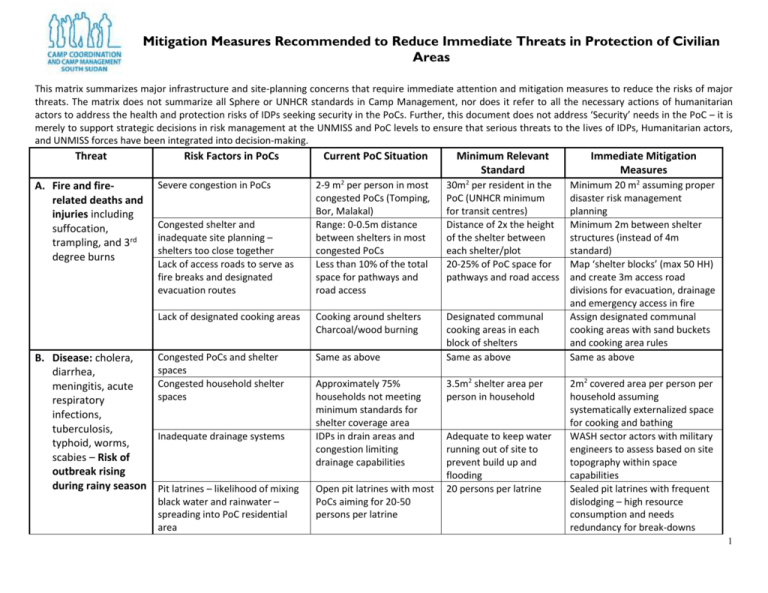
Mitigation Measures Recommended to Reduce Immediate Threats in Protection of Civilian Areas This matrix summarizes major infrastructure and site-planning concerns that require immediate attention and mitigation measures to reduce the risks of major threats. The matrix does not summarize all Sphere or UNHCR standards in Camp Management, nor does it refer to all the necessary actions of humanitarian actors to address the health and protection risks of IDPs seeking security in the PoCs. Further, this document does not address ‘Security’ needs in the PoC – it is merely to support strategic decisions in risk management at the UNMISS and PoC levels to ensure that serious threats to the lives of IDPs, Humanitarian actors, and UNMISS forces have been integrated into decision-making. Threat A. Fire and firerelated deaths and injuries including suffocation, trampling, and 3rd degree burns B. Disease: cholera, diarrhea, meningitis, acute respiratory infections, tuberculosis, typhoid, worms, scabies – Risk of outbreak rising during rainy season Risk Factors in PoCs Current PoC Situation Minimum Relevant Standard Immediate Mitigation Measures 2-9 m2 per person in most congested PoCs (Tomping, Bor, Malakal) Range: 0-0.5m distance between shelters in most congested PoCs Less than 10% of the total space for pathways and road access 30m2 per resident in the PoC (UNHCR minimum for transit centres) Distance of 2x the height of the shelter between each shelter/plot 20-25% of PoC space for pathways and road access Lack of designated cooking areas Cooking around shelters Charcoal/wood burning Congested PoCs and shelter spaces Congested household shelter spaces Same as above Designated communal cooking areas in each block of shelters Same as above Minimum 20 m2 assuming proper disaster risk management planning Minimum 2m between shelter structures (instead of 4m standard) Map ‘shelter blocks’ (max 50 HH) and create 3m access road divisions for evacuation, drainage and emergency access in fire Assign designated communal cooking areas with sand buckets and cooking area rules Same as above Severe congestion in PoCs Congested shelter and inadequate site planning – shelters too close together Lack of access roads to serve as fire breaks and designated evacuation routes Inadequate drainage systems Pit latrines – likelihood of mixing black water and rainwater – spreading into PoC residential area Approximately 75% households not meeting minimum standards for shelter coverage area IDPs in drain areas and congestion limiting drainage capabilities Open pit latrines with most PoCs aiming for 20-50 persons per latrine 3.5m2 shelter area per person in household Adequate to keep water running out of site to prevent build up and flooding 20 persons per latrine 2m2 covered area per person per household assuming systematically externalized space for cooking and bathing WASH sector actors with military engineers to assess based on site topography within space capabilities Sealed pit latrines with frequent dislodging – high resource consumption and needs redundancy for break-downs 1 Threat Risk Factors in PoCs Lack of systematic chlorination of all water in PoCs (drinking, cleaning, bathing) C. Protection Threats including physical harm, crowd control, genderbased violence, child abuse and exploitation Solid waste build-up in the PoC or close-by attracting rodent and other disease vectors Insufficient facilities, open spaces and protected in-site zones for specific persons and needs Insufficient lighting around public facilities Current PoC Situation Some PoCs now chlorinating water (Malakal, Bor now chlorinating) Trucking out via tractors and/or lorries Limited space for health, education, WASH, distribution and child friendly spaces No lighting for most public latrines, etc. Minimum Relevant Standard Immediate Mitigation Measures 15 litres per person per day of chlorinated water Install source chlorination water systems to assure only chlorinated water in PoCs Up to 10 litres of solid waste per household per day for removal 15-20% of the site dedicated to open spaces and public facilities (UNHCR standards) Lighting around latrines, cooking and bathing areas, and on pathways to create safe walking areas Assure tractors and back-up vehicles for removal and dump sufficient distance from PoC Designate adequate space and rapidly install facilities or infrastructure to ensure proper crowd control Install solar or electric lighting for key points, including flood lighting of public facilities and open spaces Other measures necessary to mitigate major disasters in the PoCs – these activities should be managed by humanitarian actors (site management agency) in coordination with UNMISS. Although UNMISS will not manage the IDP committees, this will require support, dialogue and training as needed. 1. Fire brigades and evacuation committees a. IDP committees set-up and trained with drilling and simulation exercises for fire fighting b. Evacuation route planned and evacuation points identified with signs c. Simulation of evacuation drills including keeping evacuation roads clear for fire-fighting personnel d. Regular identification of fire risk in the PoC and promotion to decrease these risks 2. WASH committees with TORs including: a. Hygiene Promotion; b. Control of Drainage areas – prevent families/IDPs from setting up shelter in drainage; clear drainage of refuse build-up; c. Control of Latrine and Water systems – verify and red flag systems that need attention before they overflow/break-down; recommend suitable locations to set up latrines that can be accessible or designed for people with disabilities (if not set up yet) 3. Protection committees: a. Regular follow-up with specific needs groups (e.g. pregnant and lactating women, children, elderly, etc.) b. Regular identification of protection risks and needs to improve conditions c. Case referral system in place and monitored for functionality by protection cluster partners d. Committee to directly address the question of combatants (even if unarmed) and ethnic/political tensions within PoCs 2
